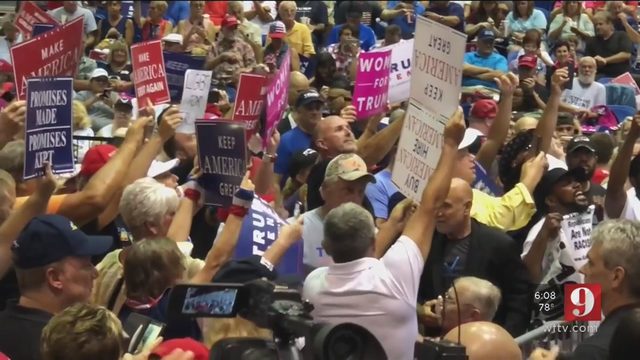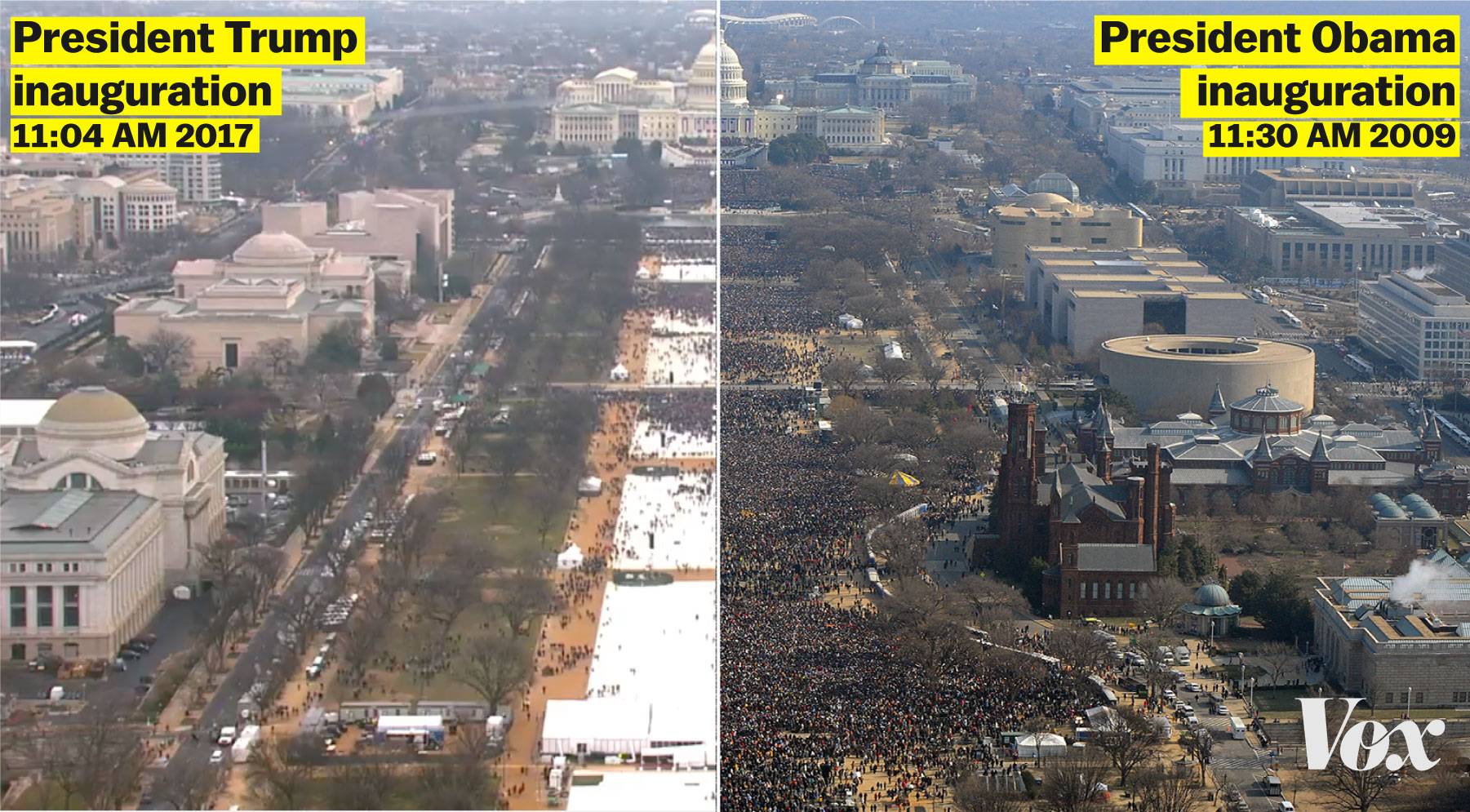Trump administration proposes tough rules on protests

The Trump administration is proposing to overhaul rules for protests in front of the White House and at other iconic locations in Washington, D.C., in an effort that opponents say is aimed at shutting down free speech.
The National Park Service’s (NPS) proposal, for which public comments are due by Monday, would close much of the sidewalk north of the White House to protests, limit the ability for groups to have spontaneous protests without permits in that area and on the National Mall and open the door to potentially charging some demonstrating groups fees and costs for their events.
The plan was released in August with little fanfare. But civil rights groups have been sounding alarm bells in recent days as the comment period comes to a close.
In making the proposal, the NPS cites its mandate to protect land, saying that it wants to “provide greater clarity to the public about how and where demonstrations and special events may be conducted in a manner that protects and preserves the cultural and historic integrity of these areas.”
But opponents see a connection to President Trump’s disdain for protesters, and congressional Republicans’ denunciations of recent demonstrations against new Supreme Court Justice Brett Kavanaugh as “mob rule.”
They argue that the iconic places in Washington, D.C., that hosted Martin Luther King Jr.’s “I Have A Dream” speech in 1963 and the Occupy encampments in 2012 need to remain as welcoming as possible for the First-Amendment-guaranteed right to protest, not just for D.C. locals, but for people from around the country who travel to the nation’s capital.
Mara Verheyden-Hilliard, executive director of the Partnership for Civil Justice Fund, said that while most recent administrations have tried to crack down on protests covered by the NPS unit known as the National Mall and Memorial Parks, the Trump effort is more significant.
“This administration’s come in with the most bold and consequential overhaul. The consequences are enormous,” Verheyden-Hilliard told The Hill.
“There’s never been such a large effort at rewriting these regulations,” she said. “I don’t think there can be any question that these revisions will have the intent and certainly the effect of stifling the ability of the public to protest.”
While the proposal itself wouldn’t lead directly to fees being charged for protests, it asks the public to weigh in on the possibility.
Verheyden-Hilliard was particularly critical of a proposal to reduce distinctions between demonstrations and “special events,” which include concerts and festivals. Demonstrations have previously been subject to less scrutiny in permitting and can get their permits almost automatically.
Under the proposal, those protections could change, especially if anyone sings or dances at a protest.
“Speech plus music doesn’t lose its speech character,” she said. “If the event is focused on expressing views and grievances, it is a demonstration.”
The American Civil Liberties Union’s local chapter said in a blog post that major protests like King’s speech could become too expensive for their organizers.
“Managing public lands for the benefit of the American people is what Congress funds the National Park Service to do. That includes demonstrators just as much as tourists or hikers,” wrote Arthur Spitzer, co-legal director of the ACLU of D.C.
Top Democratic lawmakers are also getting involved.
Rep. Raúl Grijalva (Ariz.), the top Democrat on the House Natural Resources Committee, joined with Rep. Jerrold Nadler (N.Y.), his counterpart for the House Judiciary Committee, and other Democrats this week in denouncing the fee idea in a letter to Interior Secretary Ryan Zinke.
“National parks must be accessible and open to the American public for peaceful assembly,” they wrote.
“While the recuperation of costs may be an appropriate standard for special events that are celebratory or entertainment-oriented, the proposed shift could have the disastrous result of undermining the freedoms of expression and assembly — which are fundamental constitutional rights — in one of our nation’s premier public parks.”
NPS spokesman Brent Everitt said any fee changes would require a separate regulatory proposal. But he nonetheless defended potential fees, citing as an example the 2012 Occupy protests in downtown D.C.’s McPherson Square and elsewhere, which cost the agency nearly $500,000.
“At this time, we want to have a genuine conversation with the public about updating a comprehensive plan to best facilitate use and enjoyment of the National Mall while preserving and protecting its monuments and memorials. Permit fees and cost recovery considerations are just one part of that overall conversation,” Everitt said in a statement.
He said the agency wants input on whether the costs to the agency are an “appropriate expenditure of National Park Service funds, or whether we should also attempt to recover costs for supporting these kinds of events if the group seeking the permit for the event has the ability to cover those costs.”
The myriad rules and standards for events on NPS land in the nation’s capital have been shaped largely by decades of litigation. And if the agency pursues a regulation like the one proposed, the lawsuits will only continue.
“If these regulations go through in current form or a substantially similar iteration, we are prepared to have them enjoined,” Verheyden-Hilliard said. “We believe that they are unconstitutional and fundamentally unsound. And moreover, they are unjustified.”
The NPS is taking comments through Monday on its regulations.gov portal.
[The Hill]


